By Louis Ciotola
In the spring of 1860, when Giuseppe Garibaldi became Dictator of Sicily, Italy was a confusing conglomerate of states, divided between Piedmont-Sardinia and Austrian Venetia in the north, the Papal States in the middle, and the Kingdom of the Two Sicilies, centered in Naples, in the south. Compared to the rest of Italy, the Neapolitan realm was politically and economically backward and its new king, Francis II, was borderline incompetent. Fearing that conditions could spark a return to the revolutionary fervor of the late 1840s, European leaders pushed Francis to enact political reform, but the obstinate king refused. He was committed to promoting his own absolute power, even at the cost of provoking increased hostility from his own people. Revolts in Naples that April were forcibly suppressed, increasing resistance to Francis at home and abroad. (Read more about the stories and events that shaped the future of Europe inside Military Heritage magazine.)
“A Million Men With a Million Guns”
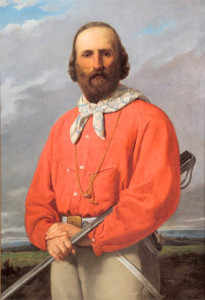
One such resister with no shortage of passion was Italian soldier of fortune Giuseppe Garibaldi, then living in retirement on the island of Caprera, north of Sardinia. Garibaldi’s passions were aroused less by Francis and the situation in Naples than by the situation in his home city of Nice, which had been handed over to France by Piedmont’s prime minister, Camillo Benso, the Count of Cavour. Cavour’s appeasement of France made Garibaldi feel like a foreigner in his own country, something the adventurer could not stomach. In his anger, not only did Garibaldi reject the plebiscite by which Nice and Savoy freely welcomed French control, but he planned to forcibly reverse it. With the slogan “a million men with a million guns,” Garibaldi began a furious recruiting campaign aimed at pulling together an army of liberation.
The scheme seemed perfectly logical to Garibaldi, but there were others who sought to unleash his talents and energy elsewhere. Exploiting Garibaldi’s popular appeal, republican leaders such as Giuseppe Mazzini and the Sicilian exile Francesco Crispi saw a much riper target for liberation—the island of Sicily. Unlike Nice or Savoy, which both accepted French dominion, Sicily was relatively hostile toward its overlord, Francis II. Insurrections were a common occurrence on the island. Mazzini and Crispi believed that Garibaldi’s mere presence there would foster more insurrections and lead, in time, to the creation of an Italian republic.
Garibaldi welcomed the idea. Republican flattery whetted his appetite. Guarantees of mass rebellion, however, were less than convincing to Garibaldi. He did not believe the time was right. But Mazzini and Crispi wanted Garibaldi’s assistance badly, even going so far as to instigate renewed rebellion in Sicily with promises of his imminent arrival. The ruse did little more than bring down upon the rebels the crushing force of the Neapolitan army. Also troublesome was the question of Garibaldi’s basic motivation. He had already disappointed the republicans by declaring that any invasion of Sicily would be for the ultimate goal of “Italy and Victor Emmanuel.”
For King Victor Emmanuel II of Piedmont, things were not so cut and dried. The king would give only secret support to Garibaldi’s invasion of Sicily for fears that Piedmont would be seen throughout Europe as an aggressor state. At the same time, the king could not outwardly seek to stop Garibaldi, lest he risk offending public opinion in his own kingdom, which was overwhelmingly sympathetic to the Italian patriot. Furthermore, should Garibaldi invade against Victor Emmanuel’s wishes, it would only serve to aid his republican enemies. In the end, the king gave Garibaldi his blessing, but only passively. The invasion could only be conducted by volunteers; permission to utilize a royal brigade was flatly denied. Garibaldi could live with those terms.
Cavour, who was no fan of Garibaldi, felt differently. The prime minister was keen to have things done his way. He feared the republican influence on Garibaldi and had no interest in rushing the process of Italian unification. But Cavour, too, was answerable to the Italian public as well as European opinion, and he had to walk a fine line in his attitude toward Garibaldi. Discreet discouragement was his only option. “I think they will all be captured,” he said privately of the proposed expedition.
Outgunned and Outnumbered
Garibaldi was also feeling pessimistic about an invasion of Sicily, but the republicans turned to blatant chicanery to change his mind. Only days after reports had filtered in that the latest uprising on the island had been crushed, Crispi fabricated a telegram that falsely indicated that the rebellion, although defeated in Palermo, lived on throughout the countryside. Wanting to be persuaded, Garibaldi blindly accepted the telegram at face value and finally agreed to lead the expedition. A half-hearted attempt by Cavour to halt the invasion was stifled by the king, leaving the road clear for Garibaldi to fulfill his destiny.
Throughout late April and early May, Garibaldi’s forces gathered in Genoa. With only two dilapidated steamers available to transport the army, many volunteers had to be turned away for lack of room. In all, a ragtag force of 1,089 men left Genoa for Sicily on May 5, the majority being northern Italians accompanied by a sizable contingent of foreigners. Garibaldi’s force was far from being a professional army. Among their number were doctors, lawyers, artists, and even three former priests. The oldest among them had served in the Napoleonic Wars, while the youngest was a boy of 11. There was even a woman dressed as a man—Crispi’s wife. Although they were very different, the Garibaldini, or Italian “red shirts” as they were known, shared a great desire for adventure and a love for the man who would lead them into it.
The Italian red shirts acquired rifles in Genoa, but they were of such poor quality that Garibaldi scoffed that they were “old iron.” Even worse, there was no ammunition—the boats carrying it never arrived. “No matter, we go without,” said Garibaldi. Dressed in his famous Italian red shirt and poncho, he was the very model of outward confidence. He would need every ounce of self-assurance. Pitted against his poorly armed volunteers were 25,000 well-armed Neapolitan troops in Sicily and another 100,000 on the Italian mainland. Pausing to write a quick letter assuring the king of his loyalty, Garibaldi departed at dawn on May 5.
Bravado aside, the lack of ammunition troubled Garibaldi, who planned a quick stop in Tuscany to alleviate the situation. At the fort of Orbetello his men obtained newer rifles and three cannon. The fort’s governor, having aided Garibaldi without showing the outward discretion necessary for maintaining Piedmont’s European image, was arrested for his troubles. Following a quick round of drilling and reorganization, Garibaldi and his volunteers set out for their final destination on the afternoon of May 9.
Garibaldi’s Thousand Land in Sicily
In the coming months, Garibaldi and his “Thousand” would be blessed by good luck. The first taste of such luck came on May 11 as their steamers neared the Sicilian coast on the island’s northwest shore at Marsala. Both the Neapolitan garrison and fleet were temporarily absent, leaving the landing miraculously unopposed. Still, the disembarkation nearly turned into a disaster when one of the steamers ran aground. A fleet of small rafts commandeered from shore arrived to save the day, while the remainder of Garibaldi’s troops marched into Marsala along a narrow mole that jutted into the harbor.
The column had not gotten far before three Neapolitan warships arrived to contest the landing. They immediately began an ineffective bombardment, which only succeeded in wounding a dog. Fortuitously for the invaders, the bombardment was as short lived as it was poorly conducted. When British warships observing the action warned against hitting British residents inside the town, the Neapolitans, afraid of causing an international incident, halted the barrage.
Once safely inside Marsala, Garibaldi wasted no time in calling for a general revolt against the Neapolitans. The Thousand were ordered to behave as liberators rather than conquerors while Garibaldi himself ruled as virtual dictator of the island, a title he insisted was only adopted to suit his universal popularity. Cavour thought differently. Already, Europe was suspicious of Piedmont’s role in the invasion, forcing the prime minister to lamely profess his powerlessness to stop 1,000 measly invaders. But the self-proclaimed dictator cared little of Europe’s concerns. With his 1,000 poorly armed men and inadequate maps, Garibaldi marched defiantly alongside his volunteers toward the Sicilian capital of Palermo.
Although much more numerous and better equipped, in many respects the Neapolitan opposition was something of a paper tiger. The common soldier, though skilled, was infected with chronically low morale, while his officers were of such poor quality that it was not uncommon for them to be murdered by their own men. Nevertheless, the odds against the Garibaldini were still immense.
First Victory For Garibaldi and the Italian Red Shirts
There was, however, some hope for the Thousand. In the town of Salemi they received a joyous welcome, indicating overwhelming popular support for the insurrection. Of more immediate use was the procurement of 1,000 Sicilian reinforcements and two old but still operational cannon. The Sicilians were of questionable reliability, but an army as small as Garibaldi’s could hardly afford to be picky.
It was not long before the Italian red shirts got their first test against the Neapolitan army. The enemy, led by Francesco Landi, sought to block the road to Palermo. More than 3,000 Neapolitans under Major Sforza commanded a hill known as the Piante di Romano outside Calatafimi with orders to halt the volunteers. Sforza’s troops, the talented 8th Cacciatori Battalion, felt they had little to fear from the outnumbered rabble advancing upon them. Landi shared the sentiment confidently enough to leave a full third of his army in reserve far to the rear.
On the blistering hot morning of May 15, the Garibaldini took up a position opposite the Piante di Romano on a hill called Pietralunga. There, Garibaldi planned to entrench himself and await the inevitable Neapolitan attack, which would come through the vines and over the dry stream that comprised the valley between the two hills. As so often happens in war, things did not go exactly as planned.
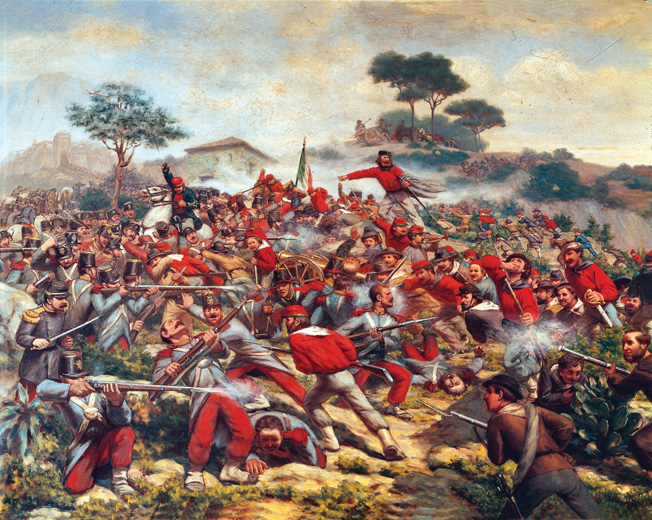
The Neapolitan attack did indeed come. Judging their opponents to be completely insignificant, Sforza’s vanguard marched brazenly forward into the valley below. Garibaldi had prepared his defenses for just such a situation, but his excited men, perhaps not unexpectedly, took matters into their own hands. After firing only one volley, the volunteers rushed headlong down the Pietralunga with fixed bayonets. A trumpet sounded the recall to no avail. It was all Garibaldi could do to follow the lead of his enthusiastic compatriots.
Much to his delight, the stunned Neapolitans fled before the onslaught back to their original positions. The volunteers vigorously pursued, but were soon forced to slow at the base of the Piante di Romano. Divided by stone walls into a series of terraces, the hill provided a formidable defense. As the Garibaldini ascended the hill amid fierce hand-to-hand combat, resistance gradually stiffened until finally the advance ceased altogether. Only the poorly aimed shots from the Neapolitans at the summit provided any solace.
Nino Bixio, one of Garibaldi’s most trusted officers, urged retreat, but Garibaldi obstinately replied, “Either we create Italy here, on this spot, or we die in the endeavor!” At that moment, Garibaldi was struck by a large stone. Whether or not he believed it to be true, he drew his sword and exclaimed: “Come on. The ammunition is finished. Charge!” Leaping to his feet, he led a renewed attack, opportunely assisted by the cannon, which had been temporarily forgotten in the haste to begin the battle. Inspired, the volunteers surged to the crest and drove off the remaining enemy. At a cost of 30 dead and 100 wounded, the Garibaldini had won their first battle. Sicilians did not fail to take notice.
The Seeds of Rebellion in Porta Termini
For his part, Garibaldi did his best to stir the island. “Our enemies are fleeing toward Palermo,” he reported. “Tell the Sicilians that any kind of weapon is good enough for a brave man.” The push for general rebellion was having its effect. Despite commanding an overwhelming 20,000 or so troops in Palermo, Ferdinando Lanza was shaken, fearful the island would erupt against him at any moment. Meanwhile, troop confidence had already been compromised by Landi’s perceived lack of effort at Catalafimi.
Another enthusiastic greeting of the Italian red shirts at Alcamo only heightened Lanza’s fears. Now, however, the Neapolitans were at last able to deliver Garibaldi his first reversal. Garibaldi originally had planned to march straight on Palermo but was slowed at Partinico. Following the delay, he sent his Sicilians out in an effort to capture Monreale in an operation that turned into a disaster. The Sicilian commander was killed and all hope of a straightforward advance on Palermo was dashed. Garibaldi now decided to conduct a long, circuitous march to approach the city from the southwest.
The Italian red shirts passed by Monreale on May 22. The march deeper into the Sicilian interior grew more and more difficult as the terrain became increasingly mountainous. Nearly constant rain did little to help matters. Exhausted and wet, the rearguard fended off Neapolitan attacks as the rest of the Garibaldini headed toward Piana dei Greci. Garibaldi gathered his mounting sick and, with an escort of 50 men, sent them ahead in the direction of Corleone. The rest of the army followed closely behind.
To the Neapolitans it appeared that the invaders were retreating in order to hide in the interior. The Swiss mercenary Lukas von Mechel led a contingent of 4,000 in pursuit. Lanza was thoroughly convinced the war was all but won. He forwarded the news to Naples, “Garibaldi’s band has been routed and is withdrawing in disorder.” But Lanza was badly mistaken. Garibaldi, having changed his route only two miles down the road, had completely fooled von Mechel, who continued chasing the tiny band of sick. Garibaldi, meanwhile, was safely in Misilmeri, having attained both his desired position and additional Sicilian reinforcements without the slightest enemy knowledge.
An even greater prize awaited Garibaldi in Misilmeri. There, he was greeted by a Hungarian journalist and aspiring adventurer named Nandor Eber writing for the London Times. Not only did Eber provide a layout of troop positions in Palermo, but he also pointed out its weakest point at the Porta Termini and predicted a full-scale insurrection should the Garibaldini penetrate the city. Ecstatic over his good fortune, Garibaldi vowed, “Tomorrow I shall enter Palermo as victor or the world will never see me again among the living.”
Given his vast numerical inferiority—3,750 men to roughly 18,000—and his total lack of siege equipment, Garibaldi had no better strategy than to sneak into Palermo and attempt to infect it with rebellion. Under cover of darkness on May 27, several volunteers led by their Sicilian allies began a stealthy march to the Porta Termini, leaving campfires blazing in their wake to conceal their sudden absence. A few hours later, however, early on the morning of May 28, Garibaldi’s plan unraveled. While approaching the bridge leading to the city gate, a frightened horse bolted, causing the unnerved Sicilians to begin shouting and firing. Only moments before, Bixio had ironically requested that the Sicilians be moved to the rear. Now it was too late. The interlopers were discovered, and the battle for Palermo was prematurely under way.
The Garibaldini’s Battle for Palermo
When the Neapolitans opened fire, the Sicilians immediately scattered. The Garibaldini held firm during the panicked mass exodus of their allies. At 4 am, Garibaldi ordered a charge that captured the bridge and penetrated the Porta Termini. Throughout the morning as the Garibaldini filtered into the city, the Neapolitan defenders fled, more terrified by the civilian population than the actual invaders. By noon only the Castellammare, the mint and the palace held out, while citizens frantically barricaded the streets in preparation for an expected Neapolitan counterattack.
But Lanza did not counterattack. Instead, perhaps out of revenge against the city that had betrayed him, he began an indiscriminate bombardment of Palermo from the Castellammare and his offshore fleet. Nothing was spared. The poorest neighborhoods were hit the worst. “If the object of the Neapolitans was to inspire terror,” said Eber, “they certainly succeeded.”
The terror, however, was little more than desperation. The Neapolitan soldiers in the palace were entirely cut off, while the population, stirred to even greater action by the vicious bombardment, continued to erect barricades. Exasperated, Lanza appealed to an offshore British fleet to mediate a cease-fire. While declining to mediate, British Admiral Rodney Mundy did arrange for the two sides to confer on neutral ground aboard his flagship, HMS Hannibal. Garibaldi eagerly accepted the offer to negotiate, and the opposing sides quickly signed a 24-hour truce. Had Lanza known that the Garibaldini were nearly out of ammunition, he might not have given in so readily. Once again luck was on Garibaldi’s side.
Either someone forgot to tell von Mechel of the truce or the Swiss mercenary simply did not care. Upon his return from the fruitless march to Corleone, von Mechel immediately attacked the Garibaldini occupying Palermo. Despite having been given a brief opportunity to restock their ammunition, Garibaldi’s men were nevertheless pushed back by the late arrivals. A bloody battle raged beneath the shelled-out buildings, all the way to Garibaldi’s headquarters. An eyewitness later recounted, “Every foot of ground was won amid the cracking of the flames, the crash of falling houses, the shrieks of victims buried beneath the ruins or murdered by the savage soldiers in their flight.”
Many within the Castellammare urged Lanza to use the opportunity to crush the Garibaldini, but Lanza, after carefully considering the hostility of the people, rejected their pleas. Instead, he ordered von Mechel to respect the cease-fire, which was duly extended indefinitely on May 30. More importantly, Francis II had already demanded a cessation of the bombardment of Palermo for fear of creating disgust in Europe. He ordered Lanza to evacuate his men, which according to the terms of the truce he was permitted to do with safe passage through the harbor. The last Neapolitan soldier left Palermo on June 20. “It truly seemed a portent when 20,000 soldiers of tyranny capitulated to a handful of citizens pledged to sacrifice and martyrdom,” Garibaldi later reflected.
Cornered by Garibaldi
For the first time, Garibaldi found himself in control of a major urban center. Military operations temporarily took a backseat to bureaucratic necessities, which in turn provided time for the liberator to gather a flood of new volunteers eager to share in future glories. By mid-July, another 9,000 men had flocked to Garibaldi’s banner. Meanwhile, the early summer saw a flurry of diplomatic activity as both Cavour and Francis II scrambled to keep pace with the rapidly changing situation on the ground. Attention turned to the likelihood of a Garibaldi invasion of mainland Italy. Bowing to pressure, Francis II declared a constitutional monarchy in a vain attempt to stifle Garibaldi, while Cavour mulled over an alliance with Naples or an invasion of Naples from the north. Meanwhile, Victor Emmanuel continued his policy of passive support for Garibaldi’s activities while outwardly condemning them through proper diplomatic channels.
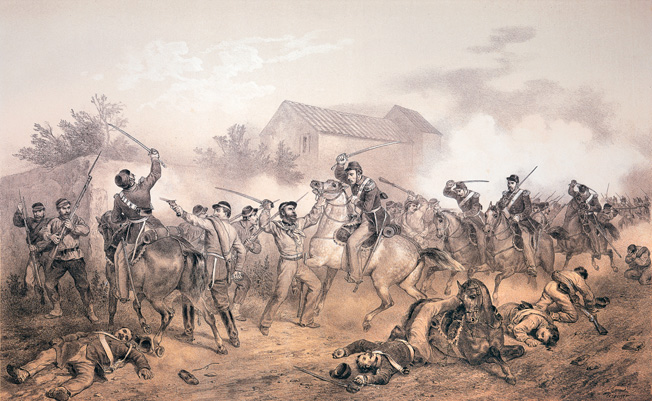
There still remained 18,000 Neapolitan troops in Messina. Garibaldi planned to drive toward the city along Sicily’s northern coast while two other forces pushed into the center and south of the island as diversions. He assumed command of the vital northernmost advance. On July 14, Marshal Tommaso de Clary, the commander of Messina, preempted him by sending 3,000 men under Colonel Fernando Bosco to block his path at Milazzo. A purely defensive strategy was all that Clary felt he could appropriately adopt. Mounting any kind of offensive would be risky since Naples had already decided that no further reinforcements would be wasted in Sicily.
Bosco had barely arrived when he encountered Garibaldi’s advance guard of 2,000 men. Mistaking them for a much larger force, he allowed himself to be trapped inside the narrow peninsula upon which sat the port of Milazzo. Both armies called for assistance, but only one savior would be forthcoming.
It was Garibaldi who answered the call, arriving on July 19. He found Bosco with 2,500 men and eight guns positioned at the base of the peninsula and protected by a series of stone walls and hedges. Some 1,000 men and 40 guns held the castle with another 400 soldiers protecting the rear against any sudden landings offshore. Garibaldi’s own army, although numbering slightly more, possessed neither cavalry nor cannon, while the enemy was well provided with both.
Milazzo’s Castle Besieged
Garibaldi launched his attack, consisting of three separate columns, the following day. The first column, positioned on the far left, moved north toward the town but was greeted by punishing cannon fire and fell back with heavy casualties. Bosco followed up the success by sending his right wing forward in a pursuit that carried on for nearly a mile. Action on the other end of the field, however, cut short the counterattack.
Farther to the east, the Garibaldini were making steady if slow progress that threatened to cut off the Neapolitan right from Milazzo. The defenders fought behind every wall and hedge, pouring lethal fire into the ranks of the volunteers. Again and again, the attackers were forced to leap from protective cover to clear each position with a bloody bayonet charge. Their leader remained in the thick of it, spurring them on as he flirted with death. The greatest obstacle was the town walls from which the Neapolitans unleashed a lethal hail of bullets. For a brief moment, the drive stalled before the bridge leading to the town gate. A sudden counterattack by enemy cavalry nearly succeeded in capturing the great adventurer himself, but Garibaldi, saber drawn, cut and slashed his way out of danger.
Sensing imminent disaster, Bosco recalled his right wing and withdrew the body of his army into Milazzo’s castle, after which the Italian red shirts promptly occupied the town. Although he had lost only some 200 men killed or wounded, the Neapolitan general had also lost his will to fight in the open. Despite having neither heavy guns nor control of the sea, the volunteers settled in for the anticipated siege.
As it turned out, the Neapolitans, lacking both food and water, were even more ill-prepared for a siege. But Bosco did not want to surrender. He messaged back to Messina warning that without supplies he could only hold out for three days. Clary, however, declined to send aid either by land or sea. His inactivity guaranteed the outcome at Milazzo. Bosco had no choice but to surrender, and on July 25 the beleaguered Neapolitans marched freely from the castle.
Cavour’s Diplomatic Dilemma
![ITALY - JANUARY 01: Camillo Benso Cavour, Count (1810-1861), Italian statesman, cofounder of the newspaper "Il Risorgimento" which gave its name to the movement for Italian unity. 1852 Prime Minister of Piemont-Sardinia; Canvas, Chateau, Sales, France. (Photo by Imagno/Getty Images) [Camillo Benso Cavour, Graf (1810 - 1861), italienischer Staatsmann, Mitbegruender der Zeitung "Il Risorgimento", welche ihren Namen der Bewegung zur italienischen Einheit gab. 1852 Premierminister von Piemont-Sardinien. Gemaelde, anonym. Shateau, Sales, Frankreich.]](https://warfarehistorynetwork.com/wp-content/uploads/m-Garibaldi1-218x300.jpg)
With Bosco’s surrender, only Messina and its garrison of 15,000 stood between Garibaldi and complete control of the island. There was to be no reckoning day. Inconsolable and disillusioned, Clary freely surrendered his entire army. According to the subsequent agreement, the Neapolitan garrison was permitted to remain within the citadel until departure. Although most of them would return to the mainland to fight another day, it was nevertheless a magnificent coup for Garibaldi. Overcoming almost unimaginable odds, he was now master of Sicily.
Garibaldi’s conquest of Sicily and his likely invasion of mainland Italy catapulted politics into a fever pitch. Francis II was isolated. Now that Naples appeared doomed, Cavour broke off all talk of an alliance, while an 11th-hour Neapolitan effort to gain the assistance of France and Great Britain fell flat. Meanwhile, Cavour continued to support Garibaldi while at the same time scheming to pull the rug out from under him. Cavour would annex Sicily for Piedmont while the volunteers fought in southern Italy. With the Neapolitans distracted, the Piedmontese army would cross through the Papal States and invade from the north. In this way, Cavour could guarantee that all republican aspirations had been crushed. While these Machiavellian plans were being finalized, the king continued his game of outward rejection and silent support of Garibaldi.
There was much administratively to be done in Messina before Garibaldi could launch an invasion of Calabria, the southernmost province of Italy. In fact, he had yet to absolutely determine his next move. Garibaldi’s republican associates were urging him to march on Rome, a rather impractical scheme but nevertheless one that a glory seeker such as himself could not dismiss out of hand. Preliminary steps, meanwhile, were taken to feel out Neapolitan defenses in Calabria. On August 8, 200 men crossed the Neapolitan-controlled straits and mounted a surprise attack on the Altafiumara fortress. Unsurprisingly, the defenders easily repulsed the assault and the volunteers hid in the nearby woods. Garibaldi ordered beacon fires to be lit by his army encamped on the shore outside Messina to let the tiny band know that they were not forgotten.
The 200 had little choice but to wait patiently while Garibaldi weighed his options. He sailed briefly to his home at Caprera off the coast of Sardinia to deliberate a possible invasion of the Papal States. Although he quickly ruled it out, rumors of an advance on Rome reached Cavour and had instant effect. The prime minister not only feared republican ambitions, but also a move by the French to assist the pope in the event of a Garibaldi attack. For Cavour, the stakes had become high. He cut off all physical support of Garibaldi and forbade Piedmontese troops to volunteer in Sicily, a practice that had hitherto been permitted. Most significantly, he intensified his plans for a Piedmontese invasion of southern Italy.
Naples an Open City
On August 8, Garibaldi led 4,000 men across the straits in a surprise landing at Melito. The Neapolitans, falsely assuming the invasion would take place where the strait was narrowest, had not stationed a single soldier south of Reggio. They also believed it impossible to capture Reggio from the landward side. These misconceptions proved fatal. Garibaldi marched furiously north to Reggio and, after suffering about 150 casualties, captured the port. A feeble Neapolitan attempt to recapture it was easily turned away with the Redshirts’ signature bayonet charge.
The 30,000 Neapolitans in Calabria did virtually nothing to halt Garibaldi’s consolidation on the mainland. Most surrendered readily. A subsequent landing of 1,500 men at Favazzina was barely contested, while the forts of Altafiumara and Scilla capitulated without a shot being fired. Thousands more put down their arms at San Giovanni after murdering their own general. The straits were made entirely open. The Neapolitan fleet, now threatened by bombardment from the guns of the captured forts, prudently withdrew to safer waters.
Garibaldi’s march northward through Calabria resembled more a victory parade than a military campaign. There was no Neapolitan effort to either resist or reinforce, while local Calabrians rushed to join forces with Garibaldi. At Cosenza, 7,000 Neapolitans surrendered, while the rest fell back to Monteleone. The 10,000 defenders of Monteleone quickly followed suit or fled north. On August 29, another 10,000 Neapolitans accepted Garibaldi’s demand of unconditional surrender at Soveria, capitulating without a fight. Another 3,000 gave up at Padula. The life had been sucked out of the Neapolitan army. It was even rumored that a whole battalion had surrendered to just six men.
Shortly before being occupied by the Garibaldini, Salerno’s garrison began to mutiny. The Neapolitan fleet threatened to do likewise. Francis II was becoming desperate, even trying to bribe Garibaldi into some kind of an alliance. At last, on September 6, he gave up hope that Naples could be saved and abandoned his own capital.
Garibaldi was in Salerno when he received word that Naples was an open city. Within hours the mayor of Naples, seeking a restoration of order from anyone who could provide it, invited the invaders to occupy the city. Garibaldi needed little prompting. Jumping onto a train, he raced ahead of his army to the Neapolitan capital. On the following day, amid a roaring crowd, he entered Naples. The gathered masses paraded him through the streets beneath the guns of the city fortress, whose garrison rejected any thought of further resistance.
The Garibaldini stayed only briefly in Naples before moving out to engage the enemy, which had reformed to the north at the Volturno River and at last appeared willing to fight. Some 50,000 Neapolitans under the command of Giosuè Ritucci massed on the left bank, centered on the fortress of Capua. Francis intended to use the force to retake his capital, but as always it was Garibaldi who struck first.
On September 19, while Garibaldi was away on a small reconnaissance mission, his Hungarian-born subordinate István Türr launched a hasty attack on Capua. Although he succeeded in capturing Caiazzo, the Neapolitans repulsed the Garibaldini before they could reach their prime target, inflicting130 casualties. Two days later the Neapolitans counterattacked, retaking Caiazzo and inflicting another 250 casualties. It was the victory they sorely needed to restore morale, and it came none too soon. Fighting now raged at Capua, while the Piedmontese army poured through the Papal States and steadily approached the Neapolitan border.
Bayonet Charges at Santa Maria
At dawn on October 1, Ritucci launched an offensive to recapture Naples under cover of a dense fog. Despite attacking with only 30,000 of their available 50,000 troops, the Neapolitans nevertheless outnumbered the 24,000 Garibaldini, nearly half of whom were Sicilians and Calabrians. Ritucci planned to attack the Garibaldini as they were spread thin over a wide front and suffering the typical lack of heavy guns and cavalry. A concentrated charge was likely to carry the day.
Fighting erupted at the town of Santa Maria, a critical railway hub and the center of the Garibaldini line. Initially the Neapolitans met with success, driving off the first line of defenders, but resistance soon stiffened and the offensive slowly ground to a halt. Garibaldi, content with the performance of his men at Santa Maria, decided to race north to oversee the fighting at Sant’ Angelo, where the issue was much more in doubt.
Traveling up the road by carriage, he was surprised to discover the presence of a small body of enemy troops that had penetrated much farther east than expected. At a distance of just 20 yards, the Neapolitans opened fire. After the carriage had absorbed the volley, Garibaldi drew his saber and, with the help of a handful of escorts, charged forward to dispatch his assailants.
By the time Garibaldi reached Sant’ Angelo, he had long ago abandoned his carriage. Arriving on foot, he found a seesaw battle taking place; the town had changed hands several times. Without hesitation, Garibaldi led the defenders in one of their now-famous bayonet charges, which succeeded in capturing the town once and for all. With Sant’ Angelo secure, Garibaldi immediately raced back to Santa Maria, where the defending commander had been wounded and the situation was once again imperiled.
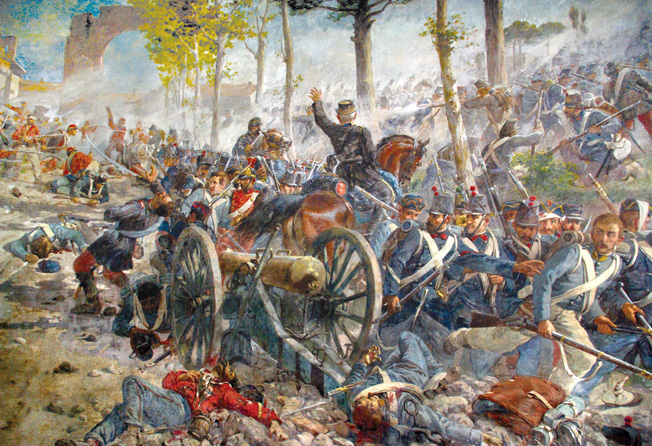
Meanwhile, a Neapolitan force of 8,000 under von Mechel was pressing the attack several miles to the east, in the rear of the Garibaldini position. A vicious fight erupted around Maddaloni, where Bixio led the Garibaldini defense. But von Mechel inexplicably ruined any advantage he may have gained by dividing his force for a simultaneous attack in the northeast. After wandering aimlessly for some time, the second column eventually joined the battle and, following a bloody struggle of attrition, captured its objective of Caserta Vecchia. By that time, however, events in the east had been overshadowed by the decisive conclusion of the main battle in the west.
Arriving back in Santa Maria, Garibaldi quickly stabilized the situation. At 2 pm, with Neapolitan energy appearing spent, he unleashed a counterattack using reserves under Türr that until now had been carefully kept out of the fray. The counterattack, predictably conducted by bayonet charge, smashed into the Neapolitan line from Santa Maria to Sant’ Angelo. As 1,500 Garibaldini struck the enemy from behind at Sant’ Angelo, another column wedged in between the front and Capua, threatening Neapolitan communications. Over the course of the next three hours, the Garibaldini pushed the enemy back to their starting point at the Volturno. By nightfall the guns fell silent. All Neapolitan hopes of recapturing Naples were forever dashed.
The following day, Garibaldi set about reducing the Neapolitan defenders within Caserta Vecchia. All told, the Battle of the Volturno River cost Garibaldi 306 killed, 1,328 wounded, and 389 missing. As usual, Neapolitan losses were less—260 killed and 731 wounded—but the capitulation of Caserta Vecchia saw another 2,000 men lost as prisoners. Volturno was Garibaldi’s largest battle. It also proved to be his last. As the fighting wound to a close, a lone Piedmontese battalion arrived on the field. Although it was too late to participate in the battle, its presence foreshadowed the inevitable end of Garibaldi’s adventure.
The 446 Survivors of Giuseppe Garibaldi’s Thousand
Garibaldi wasted no time in preparing to storm Capua and cross the Volturno. Mazzini and the republicans, aware of the approaching Piedmontese army, pleaded with him to march on Rome, but Garibaldi had no intention of challenging Victor Emmanuel. Besides, a large Neapolitan army still stood in the way, and its destruction was his first and only priority.
The main Piedmontese army crossed into Neapolitan territory on October 15. To the delight of Cavour, who feared and prepared for a clash with Garibaldi, the king ordered the red-shirted volunteers to cease all military activities. Garibaldi complied with the demand, although he saw no reason for it. He would get his chance to discuss matters with the king personally later. In the meantime, his thoughts were concentrated on the beleaguered Neapolitans, who had withdrawn behind the Garigliano River, leaving 12,000 men to defend Capua.
As arriving Piedmontese troops filed past Garibaldi, there was not a single comradely salute—an inkling of the disappointment to come. Garibaldi and Victor Emmanuel met on October 26. It was not the glorious occasion the adventurer had anticipated. Garibaldi’s usefulness at an end, the king now imagined him a potential impediment. “Your troops are tired,” he told the general, “Mine are fresh. It is my turn now.” For the volunteers, there would be no decorations, promotions, or victory parade. Garibaldi himself was offered a promotion as general in the Piedmontese army, but feeling patronized, he angrily refused.
There was one final humiliation in store for the cheated volunteers. During their meeting, Victor Emmanuel had promised Garibaldi that he would review the brave men who had battled for him against impossible odds from Marsala to the Volturno. On the appointed day, however, the king left them literally standing in the rain. Among those who waited were 426 of the original Thousand. It was hardly the ideal end to their glorious adventure. “They think men are like oranges,” Garibaldi lamented. “You squeeze out every last drop of juice, then throw away the peel.”
The Army of Piedmont rather than Garibaldi’s volunteers went on to capture Capua and, following a series of bloody repulses, eventually defeat the remnants of the Neapolitan army beyond the Garigliano. Garibaldi would not be present to witness the fruits of his labor. His efforts had stirred a revolution that toppled a kingdom, but that revolution would now be steered by others. On November 9 he gave up his dictatorial powers and set sail for Caprera. As his vessel exited the harbor, British warships fired a salvo in salute to the man who had risked more than anyone to unify Italy. The guns of the Piedmontese fleet remained silent.
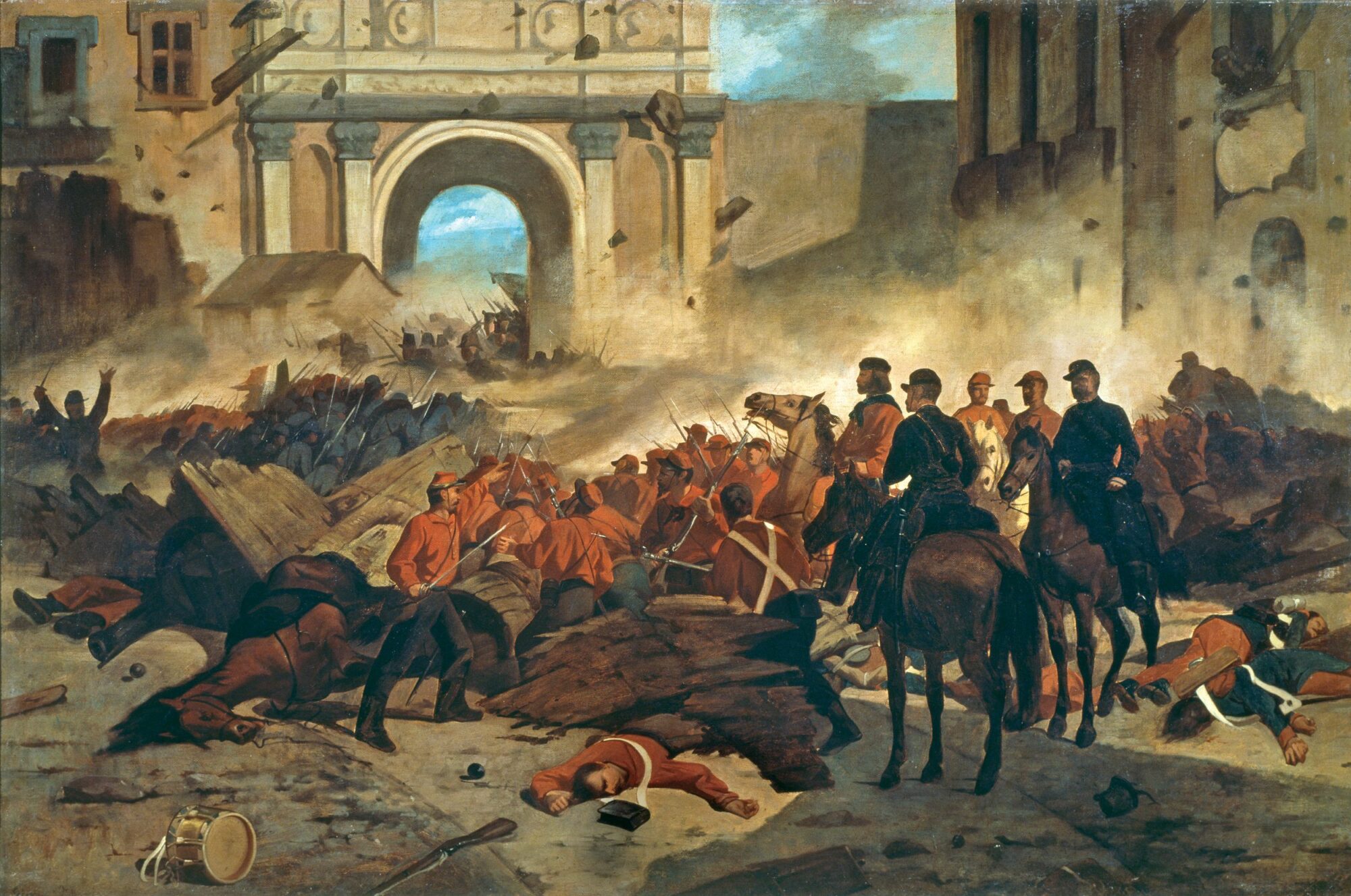
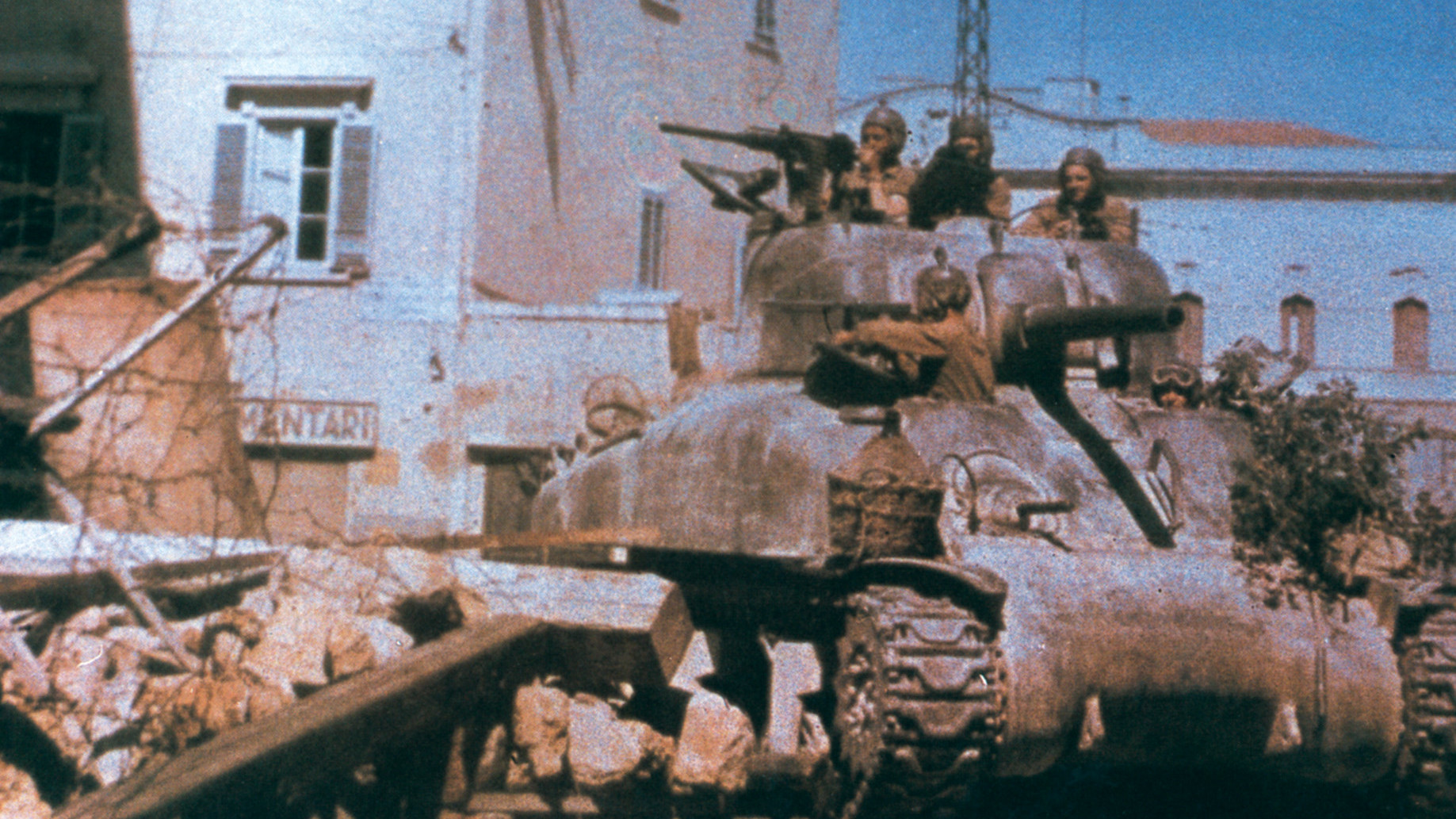

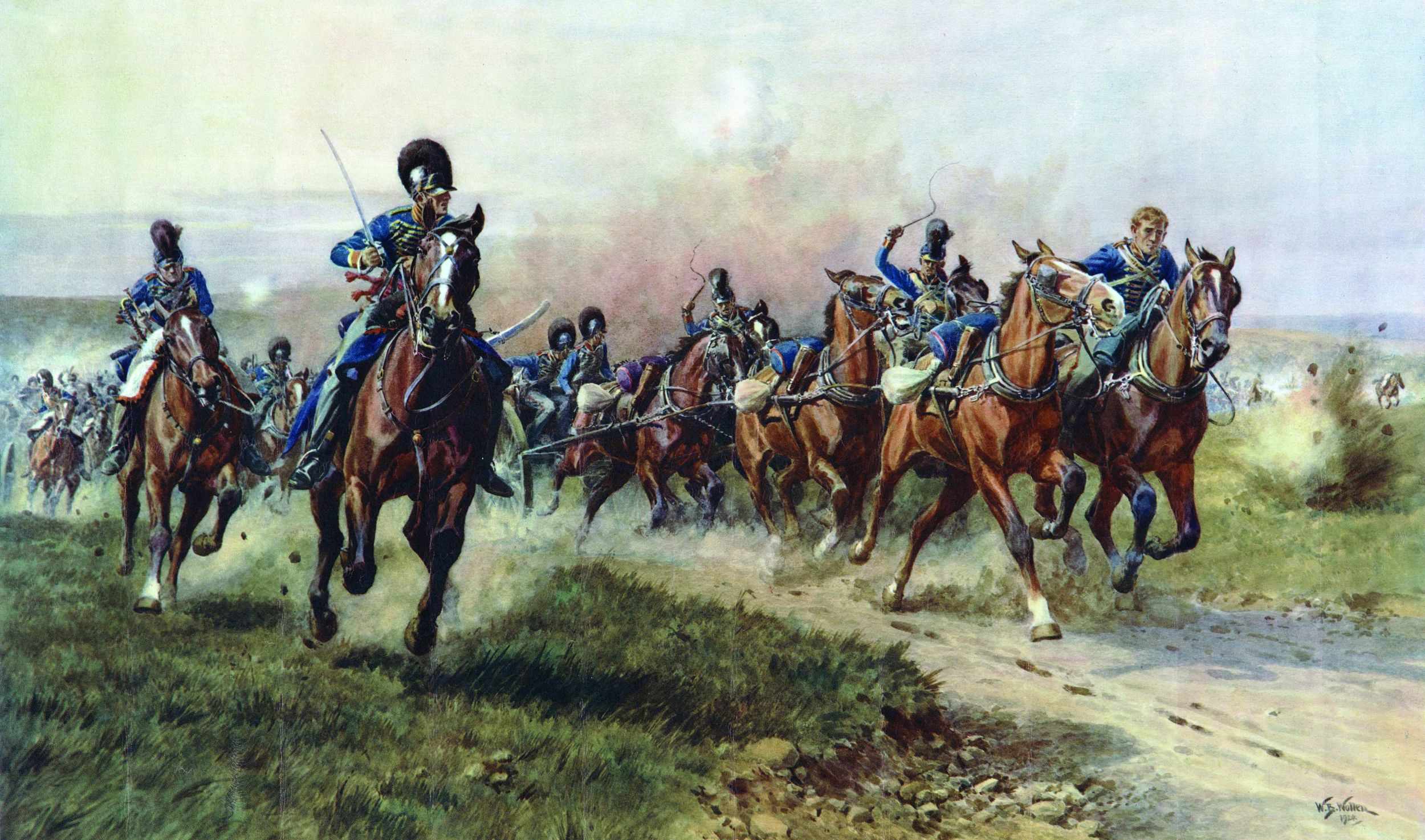

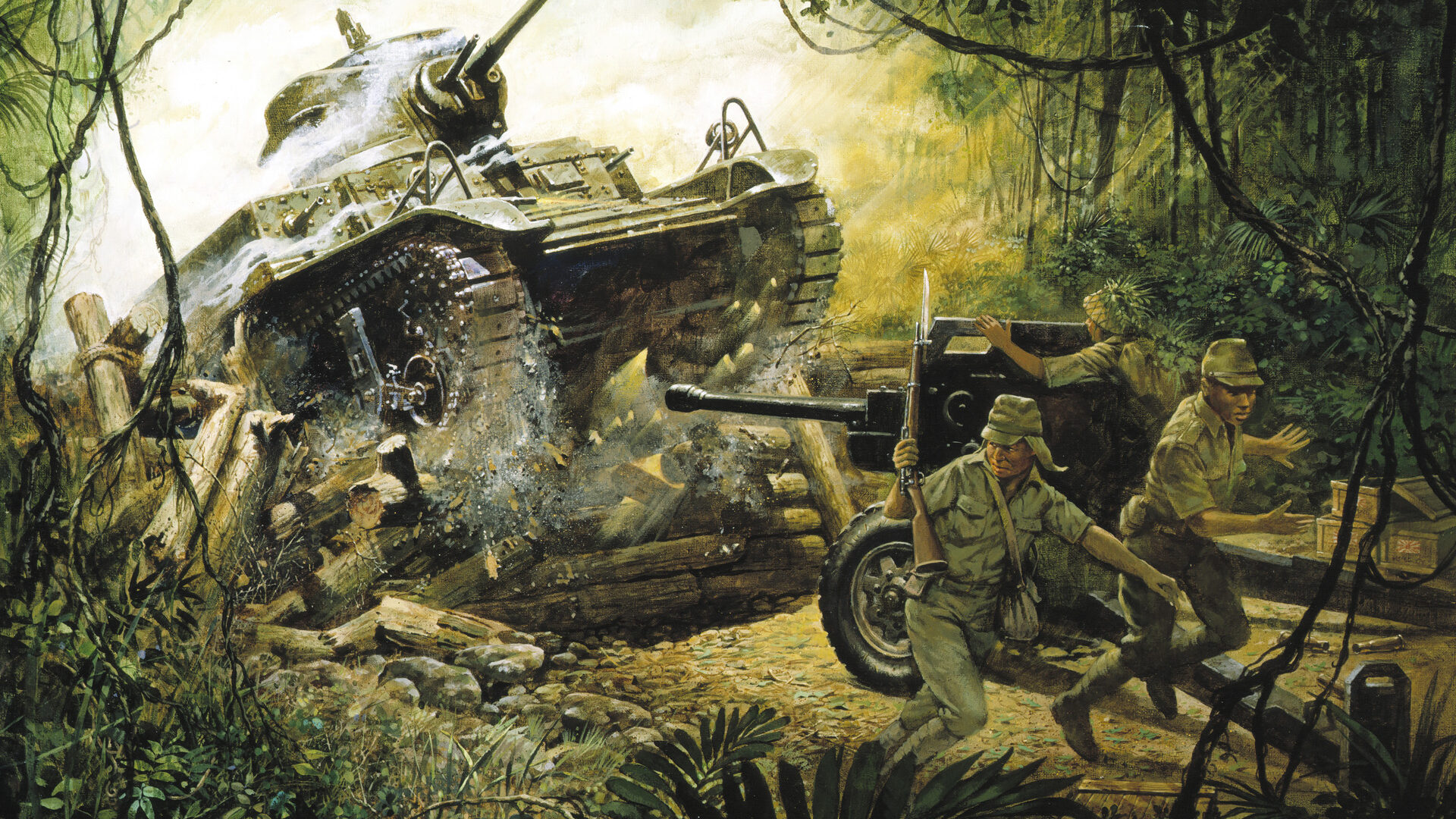
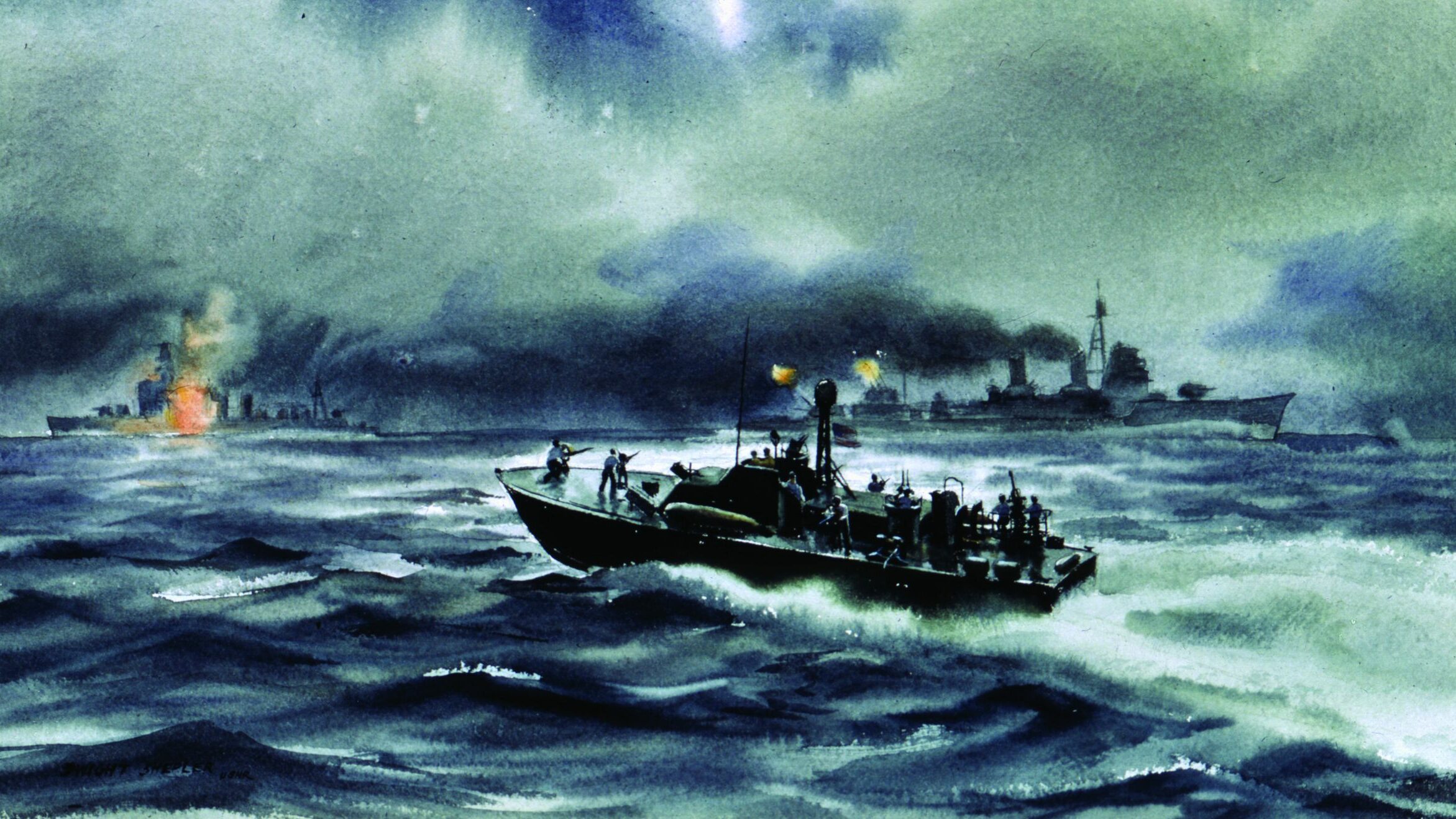
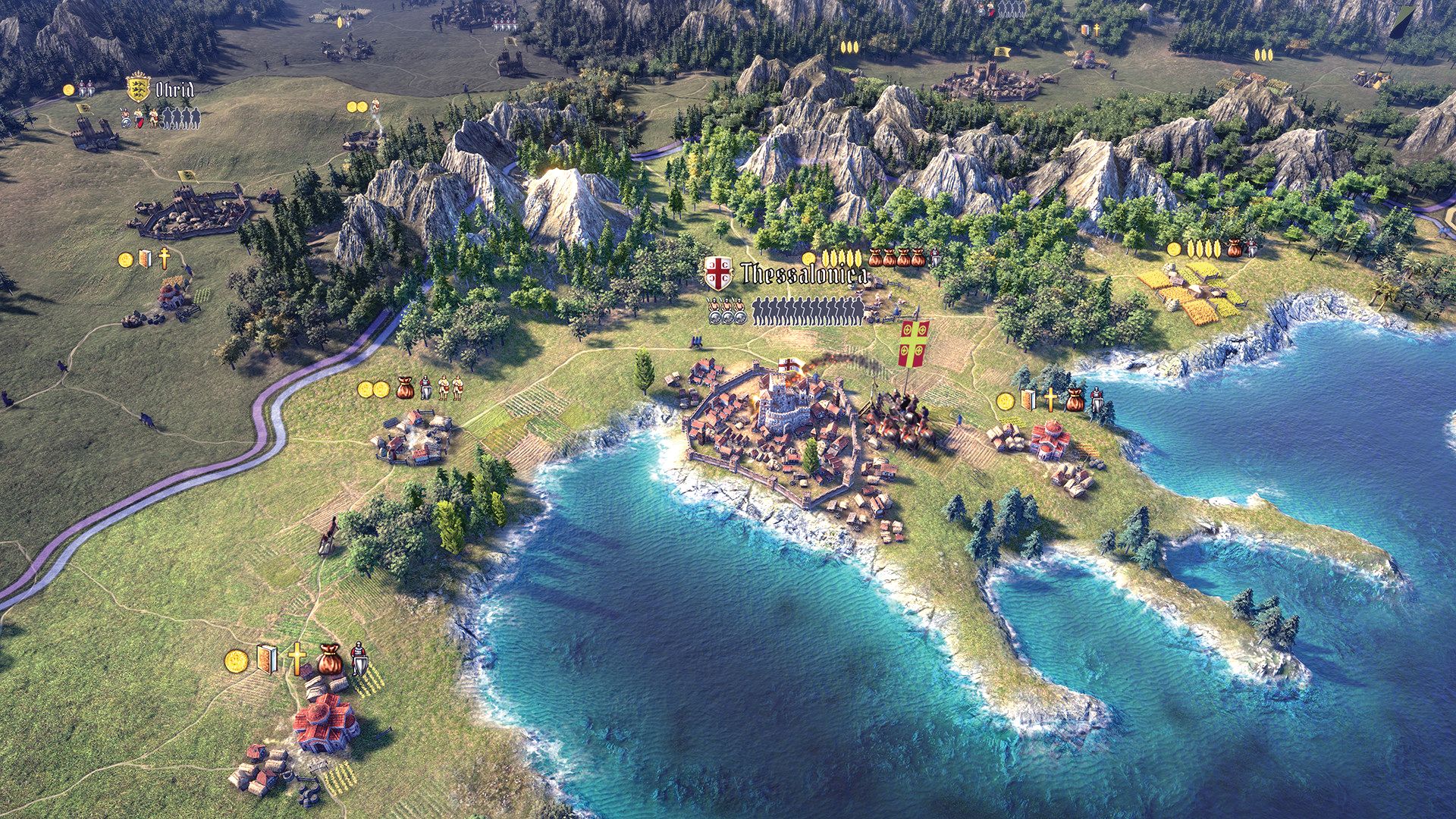
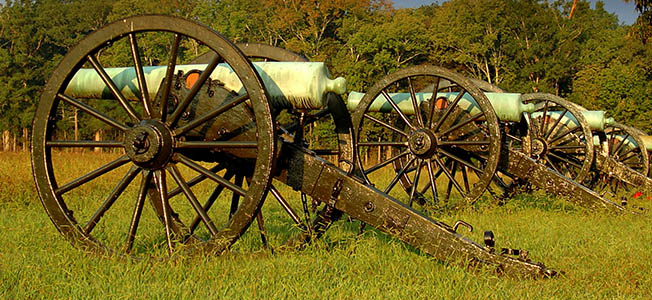
I had an ancestor named Primansi reputed to be a Redshirt with Garibaldi. Are any regimental listings available?